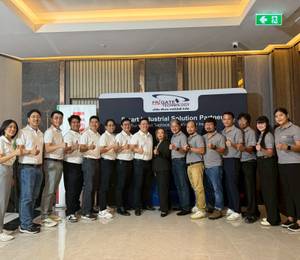Evanston, Illinois, USA – The green building materials market is expected to skyrocket in the next five years, catalyzed by an urgent need to build structures that can respond to more intense weather patterns and offer lower carbon footprints. But until now, there hasn’t been a way to compare basic materials and understand the impact of using them.
Now, Northwestern University and World Wildlife Fund (WWF) have partnered to develop an international tool that supports construction industry professionals in making environmentally responsible decisions as they select, source, use and dispose of construction materials. Originally created for disaster recovery and reconstruction guidance, Building Material Selection and Use: An Environmental Guide (BMEG) examines environmental impacts, material alternatives, and design and construction best practices.
WWF first created the tool in the wake of the 2015 Nepal earthquake, which severely damaged the country’s infrastructure and placed a high demand on resources. The BMEG provided a guidebook of sound practices to minimize likelihood of future disasters caused by deforestation, erosion landslides and floods. Building upon the framework created for Nepal, WWF and the Institute for Sustainability and Energy at Northwestern (ISEN) began collaborating in 2017 to further expand the BMEG as a decision-making tool.
The BMEG consists of a database covering more than 50 building materials and their mechanical, thermal, electrical and durability properties. The guide emphasizes the lifespan of the materials, considering environmental and ecosystem impacts during each stage – from extraction to storage and disposal. According to WWF senior fellow and ISEN visiting scholar Missaka Hettiarachchi, the guide also offers improved best practices for using materials.
“The guidebook equips government agencies, companies, NGOs and community organizations with the tools to responsibly select, use and dispose of construction materials,” said Hettiarachchi. “Accounting for environmental considerations in the construction sector benefits both people and nature.”
The database gives a close-up look at the impact of a chosen element, including its carbon footprint, toxicity, embodied energy, disposal, reuse, recyclability and approximate pricing.
Soon, users will be able to input material amounts and desired specifications into an algorithm that will provide recommendations of material combinations.
The BMEG research team, which includes Northwestern engineering professors Andreas Waechter and Gianluca Cusatis, hopes to incorporate a building model and optimization algorithm into the materials database to facilitate smoother decision-making and provide balance between minimizing costs and environmental impacts. The machine learning model they’re building will create quick, practical, cost effective and environmentally responsible suggestions in an otherwise overwhelming task of rebuilding after a disaster.
“Selecting the right materials for building reconstruction is a complex process that can involve dozens of competing considerations and tradeoffs,” said Waechter. “This includes sustainability and climate impacts as well as material costs. We’re developing a versatile computational tool that uses mathematical optimization and detailed building models and allows for rapid comparisons of options in the decision-making process. Our approach is truly unique.”
Waechter is a professor of industrial engineering and management sciences at the McCormick School of Engineering, and Cusatis is a professor of civil and environmental engineering at McCormick. Also on the machine learning team are Northwestern Ph.D. students Niloufar Izadinia and Elham Ramyar.
William Miller is a professor of chemical and biological engineering at McCormick and director of the Center for Engineering Sustainability and Resilience (CESR). He co-leads the BMEG project with WWF and ISEN along with Stephen Carr, professor emeritus of chemical and biological engineering and materials science and engineering.
ISEN has led the formal partnership agreement with WWF on behalf of the University since 2018, and the BMEG is the latest collaboration between the two organizations. The WWF collaboration is led by Hettiarachchi, who is visiting Northwestern from WWF’s Environment and Disaster Management Program. Funding support for graduate research from the BMEG was provided by the Resnick Family Social Impact Fund at ISEN and by WWF. Additional support for the optimization project was provided by Leslie and Mac McQuown.












